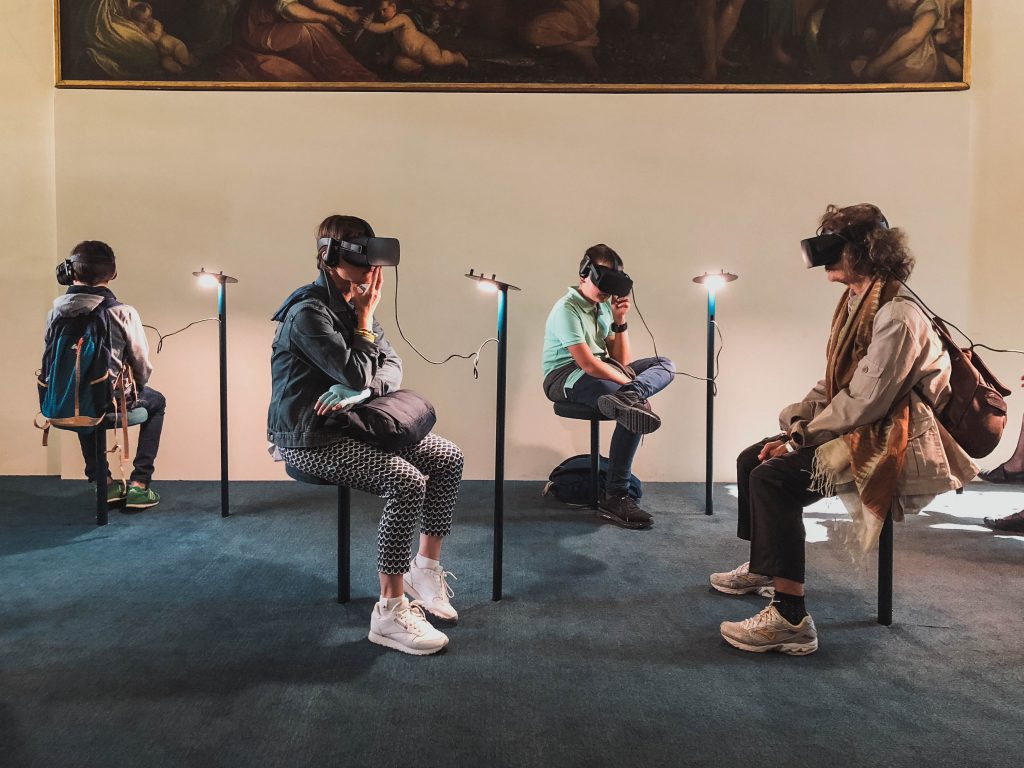
The concept of Metaverse has gained a great deal of attention in 2021. We can see that reflected in recent Google Trends data for the search term metaverse since last year.
Similar to how mobile tech has transformed our culture since the first smartphone, the Metaverse is quickly moving from the traditional stigma of being a waste of time and into the next high-tech revolution.
We can now enter virtual worlds with new economies, currencies, environments, and behaviors. For businesses, that means rethinking their whole narratives in the Metaverse while marketers must adopt new technologies at a faster pace.
What is Metaverse?
The next great revolution in computing is here and ready to stay. Metaverse promises to bring the physical world together with technologies that are only starting to re-shape the way we interact with each other, amuse ourselves, do shopping, and engage in everyday activities.
Since late July, Facebook CEO Mark Zuckerberg spent a great deal of time discussing the Metaverse –Zuckerberg refers to Metaverse as an environment where you can be present with people in digital space. From his viewpoint, Metaverse is simply an embodied internet where instead of looking at it, you can now be in it.
We can think of Metaverse as a video game but without objectives. You can do whatever you like, from playing games, hanging out with friends, working to shopping and attending concerts. This might sound all too similar to the much prefigured second life platform, which failed to gain traction. But because of the COVID-19 and the general public getting used to doing everything online, the Metaverse will be a whole different creature. Everything points to massive potential and possibilities, including the chance to completely reconsider how we interact with consumers.
Metaverse: Jam-packed with innovative marketing potential
The Metaverse announces its move beyond traditional marketing toward creating brand experiences that are more thrilling and engaging and less invasive than what we experience with online advertising today. For brands looking to build a relationship with the next-gen audiences, the phrase “in real life” has taken on a whole new significance. Simply going online is not enough; people need more interesting, meaningful, and immersive experiences. And this is exactly what the Metaverse will accomplish for brands in the years that follow.
For example, Fortnite, a renowned PVP game played by hundreds of millions of Gen Z players, collaborated with Nike to endorse its new Jordan sneakers and teamed up with singer Travis Scott for a virtual gig to an audience of over 10 million.
In-World Advertising
We refer to in-world advertising when we discuss an advertisement that appears in a virtual world that could, in some cases, mirror real-world out-of-home ads. Some organizations already offer advertising solutions that deliver in-world ads. These companies help brands place their ads in virtual environments by collaborating with developers to place ads in games. It’s like having your own PPC agency but with a greater chance of understanding your customer base.
One advantage of in-world advertising is that it could bring a level of realism to games. Recent findings revealed that 95% of gamers felt ads boosted gameplay realism. Signs and ads on billboards reflect reality and also do not impact the core gaming experience.
While in-game environments are the current landscape for early metaverse beginnings, it’s crucial to note that brand collaboration opportunities can take many forms across different technology platforms. Recent findings show just how complex the growing metaverse landscape has become as the concept merges user identity and avatars, social community, digital payments and economies, immersive experiences, and user interfaces with centralized portals into these AI & man-made environments.
As the online and physical worlds continue to merge into the Metaverse across an ecosystem of websites, brands have a unique occasion to engage with new and loyal customers in the emerging environments, exploiting consumer behaviors and market trends that are driving the digitalization of culture and the future of the internet.
How to prepare for the Metaverse?
While massive adoption of a fully envisioned metaverse is closer than ever, there’s plenty that can be done now to start preparing for its eventual arrival. By clarifying and understanding some of the building blocks of the Metaverse, businesses of all sizes, and across all industries, we can begin to explore what experiences and qualities will shape the intersection of our online and physical worlds.
Explore Non-fungible tokens or NFTs
Thanks to NFTs, the Metaverse has tiled the way for genuine economies. Non-fungible tokens are about ownerships of something unique that cannot be substituted by anything else. They create one-of-a-kind ownership for the likes of music performance, digital art, or a digital asset.
That means companies gain access to an entirely new universe for engaging people and collaborating, just as they would in the physical realm. It’s a great chance that these metaverses will actually surpass the physical economy in the future and make room for unlimited possibilities in owning equity in the digital universe.
Dive Deeper into Blockchain
Once you’ve gained a better understanding of how the blockchain facilitates NFTs, it pays to explore what it can do to drive business. One popular application for blockchain is smart contracts, which have a tremendous upside for media plans and creator/influencer partnerships. With ad fraud estimated to cost around $42 bn for advertisers, blockchain tech can also be applied to manage and diminish click fraud, allowing to better manage budgets on working media.
The Metaverse presents unique opportunities to build from the ground up. Technology providers and advertisers should start anticipating how the Metaverse may operate. Honest consideration can help us avoid the pitfalls of identity, walled gardens, and privacy that have inundated the online world since the onset of Web 2.0.


